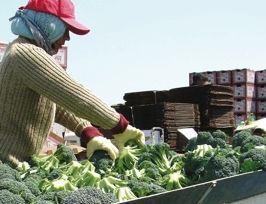
US exports of broccoli to Taiwan have an uncertain year ahead of them, with changing phytosanitary protocols to control western flower thrip, making trade difficult.
This tiny bug is native to the western US and is a major agricultural pest to floral products through laying eggs and spreading disease.
While not a particular problem to the California industry, thrips have been hitching rides inside the compact broccoli crown and turning up still alive at destination.
Because Taiwan has a sizeable floral industry, it’s hardly surprising that it has views WFT as a major agricultural threat.
Consequently, the Taiwanese government has been pressuring USDA/APHIS for the last several years to inspect more closely for thrip and reject product destined for export when detected
California exporters have found it increasingly difficult to get a phytosanitary certificates issued and shipments of broccoli have been in gradual decline over the last three seasons as a result.
Taiwan requires 30 containers in a load be inspected for live thrips.
'The only sure way to get a phyto is fumigation with methyl bromide. The problem is (the industry) has no experience with methyl bromide and has no idea how the quality will be on arrival,' said Yutaka Kubota of Freitas Brothers in Santa Maria – a major exporter to Taiwan.
'If the industry is forced to use methyl bromide, there will be a lot less broccoli shipped to Taiwan this season,' says Phil Hartman of Cal Ex Trading.
'There are about fifteen hundred containers (from the California industry) hanging in the balance in unless some kind of alternative fumigation can be found.'
Californian growers are seeking emergency approval from the US Food and Drug Administration for phosphine treatment of broccoli, but the process may take months, and many in the industry are reconsidering the Taiwanese market.



